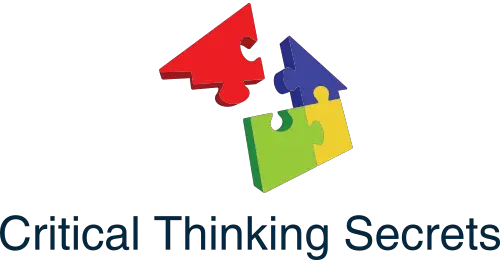Every leader faces moments when they need to address difficult topics or share hard feedback. These moments, though uncomfortable, shape how teams view their leader.
Facing tough conversations with honesty and empathy is essential for building trust as a leader.

When a leader creates a safe and open space for discussion, others know their voice matters and mistakes can be shared without fear. Employees grow and innovate more when they feel understood by those in charge.
Handling these conversations well strengthens the team’s connection and results over time. It also helps solve problems.
Key Takeaways
- Trust grows from honest, open leadership during tough conversations.
- Strong communication helps leaders and teams work through challenges.
- Supportive relationships in hard moments drive team progress.
The Fundamentals of Trust in Leadership

Trust is the foundation of effective leadership. Leaders build trust by showing honest actions, clear communication, and responsibility in their daily work.
Defining Trust and Its Impact
Trust in leadership means people believe their leader acts in their best interest. When trust exists, teams feel safe sharing ideas and taking risks.
This safe environment encourages openness and problem solving. Leaders who earn trust help resolve conflicts and manage tough conversations.
Employee trust leads to higher morale and better performance. It also reduces fear and misunderstandings at work.
Clear expectations and predictable actions help teams rely on their leader. When team members trust their leader, they follow directions and support decisions.
This cycle strengthens the whole organization.
The Role of Integrity and Honesty
Integrity means sticking to strong moral principles at all times. Honesty is about telling the truth, even when it is hard.
Both are key parts of building real trust as a leader. Leaders with integrity admit mistakes and take responsibility for them.
This builds respect and encourages others to do the same. Being transparent about challenges or changes creates a safe space for questions and feedback.
Consistent actions that match words show that leaders keep their promises. When employees see leaders practice honesty and integrity daily, trust grows.
For more, learn how creating a safe, authentic environment strengthens trust at work (https://www.harvardbusiness.org/good-leadership-it-all-starts-with-trust/).
Why Leaders Need Commitment
Commitment shows through a leader’s dedication to the team, mission, and values. Leaders who are committed build trust because teams know their leader will stand by them and support their goals.
This includes making time for one-on-one talks, holding tough conversations, and giving feedback that helps employees grow. Consistency in support and actions reassures the team that the leader will not walk away in hard times.
A committed leader creates stability and confidence. Employees feel secure when they know their leader will stay engaged and make decisions that benefit both the team and the company.
To go deeper, review why positive relationships and consistency are vital for building trust as a leader.
Preparing for Tough Conversations
Leaders face difficult conversations that often test their communication skills and ability to build trust. Preparation is key for reducing misunderstandings and creating openness when tensions run high.
Understanding the Root Causes
Effective leaders start by understanding why the issue exists. They look past surface complaints to identify patterns, triggers, and hidden problems.
By paying close attention to repeated behaviors or missed expectations, leaders get to the core of the conflict. They ask open-ended questions, listen actively, and gather input from everyone involved.
This approach builds trust and often uncovers things that might have been overlooked. Leaders who take time to understand the root causes show respect and empathy, which can defuse defensiveness.
Recognizing the reasons behind conflict allows leaders to address issues more directly. This makes the conversation more useful and long-lasting.
Developing Clarity and Purpose
Clarity and purpose are essential before going into any difficult conversation. Leaders should stay clear about what they want to achieve and what they need from the other person.
Writing down main points or goals can help keep the conversation on track. By focusing on facts and concrete examples, leaders avoid vague statements that may cause confusion.
Specific feedback and clear requests build trust and help both sides understand each other. Separating opinions from evidence prevents misunderstandings.
A leader who prepares in this way is more likely to communicate with honesty and purpose. Planning ahead ensures discussions stay respectful and productive.
Setting the Right Environment
The environment plays a big part in how well tough conversations go. Leaders should choose a private, quiet space so everyone feels comfortable sharing.
Noise, distractions, or a lack of privacy can make people nervous or defensive. Scheduling the meeting at a time when both sides feel calm and ready can lower stress.
Leaders should also plan for enough time so no one feels rushed. Allowing for pauses gives everyone time to listen and think before responding.
Small actions, like sitting at the same level or having water available, can also make a difference. A positive environment shows respect and encourages openness.
It signals that the leader values honest communication and wants to resolve problems fairly. For more on this, Harvard Business School Online suggests tips for navigating difficult conversations with employees.
Building Trust Through Effective Communication
Effective leaders rely on clear communication, active listening, empathy, and regular feedback to earn trust. Making room for honest conversations and showing consistency helps foster an open and safe environment for everyone.
Active Listening Techniques
Active listening is key for trust. Leaders can apply it by staying focused on the speaker instead of planning their next response.
They use body language, like nodding and keeping eye contact, to signal respect and attention. Repeating or summarizing what was heard in simple terms confirms understanding and removes confusion.
Taking notes during tough talks shows care for the employee’s thoughts. Open-ended questions invite employees to share more details.
This method improves conversations and helps employees feel acknowledged. Strong listening skills lay the foundation for lasting trust in teams.
Empathy in Leadership Dialogue
Empathy means understanding what others feel, not just what they say. Leaders build trust by putting themselves in others’ shoes during a discussion.
They respond to concerns with kindness and patience, not with anger or dismissal. Short statements like “I understand how you feel” or “That must be difficult” help people feel seen.
Leaders who practice empathy also consider how decisions affect others, especially in stressful times. Using empathy in conversations lowers tension and encourages people to open up.
Teams led by empathic leaders tend to feel safer speaking honestly, even about difficult topics.
Establishing Honest Feedback
Honest feedback should be specific, balanced, and timely. Leaders must correct mistakes in a way that helps people grow, not feel ashamed.
Positive feedback is just as important—it shows employees that their efforts matter. Building routines for regular feedback, like brief check-in meetings, keeps problems from piling up.
Leaders should welcome suggestions from employees to show everyone’s voice matters. This two-way street supports trust and motivates better work.
Being direct but respectful prevents misunderstanding and helps teams stay focused and accountable. Honest feedback is a regular habit, not just something saved for annual reviews.
Promoting Consistent Openness
Openness at work means sharing information and plans clearly, even if the news is not always positive. Leaders who are transparent reduce rumors and help people feel included.
They can do this through regular team updates, open-door policies, and company-wide messages. Being open about challenges or mistakes helps employees see leaders as real people.
When leaders admit they do not have every answer, it invites others to help solve problems. Teams trust leaders who are consistently open and direct in their communication.
Openness should be a habit, not a one-time event. Over time, this steady flow of honest information creates a culture where trust grows and teams work better together.
Strengthening Relationships During Difficult Interactions
Tough conversations are a chance for leaders to build trust and improve employee relationships. Handling disagreements with care can turn a challenging moment into an opportunity for connection and growth.
Fostering Connection Amidst Disagreement
When people disagree, it’s important to listen first. Leaders should ask open-ended questions and show they care about others’ experiences.
This helps people feel heard and valued, even when opinions are different. Leaders build trust by being honest and clear about their own views while respecting what others say.
Eye contact, a calm voice, and relaxed body language show employees their concerns matter.
Regular communication keeps misunderstandings from turning into bigger problems. Creating a safe space for honest talk makes employees more likely to share their thoughts.
Over time, these actions strengthen relationships and make teams stronger. For more on creating a safe space, see how leaders start with trust.
Maintaining Professional Relationships
Professional relationships depend on mutual respect. Leaders should avoid blaming or attacking, focusing instead on finding solutions together.
They make it clear that their goal is to solve problems, not to criticize. Expressing appreciation for what others do right, even during hard talks, helps maintain a positive tone.
Saying “thank you” and offering specific feedback can go a long way in keeping trust strong.
Setting boundaries is also important. This keeps conversations focused and respectful and prevents negative emotions from getting out of hand.
Clear expectations and follow-through build employee trust and encourage accountability. Learn more about building rapport in tough moments.
Leveraging Conflict for Growth
Conflict can teach teams a lot if handled well. Leaders who see disagreements as a chance to learn help their teams improve.
They encourage employees to talk about what went wrong and how to avoid it next time. After the conversation, it’s helpful to reflect as a group.
What worked? What didn’t? This honest review creates a culture where mistakes lead to learning and progress.
Leaders who model transparency and self-reflection inspire their teams to do the same. Open feedback and shared problem-solving build employee trust and deepen connections.
With the right approach, even difficult moments help teams grow stronger. For more, see thoughts on leadership, trust, and healthy relationships.
Driving Innovation and Positive Outcomes
Trust acts as a foundation for both innovation and motivation in any workplace. When leaders foster openness, it encourages fresh ideas and better teamwork.
The Link Between Trust and Innovation
A high level of trust in a team helps people feel safe to share new ideas, even if they might be risky or different. This attitude leads to more creativity and supports a culture where learning is important.
Leaders who focus on building trust set a positive tone, making it easier to recover from failures and try again with confidence. Trusted leaders are consistent and fair, which allows team members to take the initiative.
They show good judgment and build strong relationships, both of which are essential in driving positive outcomes. For example, one study highlights that leaders set the tone for culture and norms.
These practices help organizations adapt and thrive during times of change. They support growth and continuous improvement.
Find more details on how leaders influence innovation through trust in this Harvard Business Publishing article.
Encouraging Openness for Creative Solutions
Open communication helps everyone feel included and heard. When leaders actively ask for input and listen to feedback, team members become more engaged and motivated to participate.
This openness lets people discuss mistakes or challenges without fear, which is important for learning and finding creative solutions. Teams that value open dialogue often come up with unique solutions faster, as everyone is willing to share thoughts freely.
Leaders can set up regular check-ins, brainstorming sessions, or feedback meetings to make this openness a regular part of the work culture. A culture of open communication and trust helps teams handle rapid changes and tough situations more effectively.
Teams work better together and develop more innovative ideas when members know their voices matter. Leaders who prioritize openness and trust support collaboration and stronger results, as highlighted by Leadership Choice.
Frequently Asked Questions
Leaders face tough conversations that require patience, honesty, and skill. Trust is a key factor during these moments because it sets the foundation for respect, problem-solving, and growth for both leaders and teams.
How can a leader effectively manage difficult conversations with employees?
A leader can stay calm, stick to facts, and listen closely during hard conversations. It helps to keep emotions in check and focus on the issue, not the person.
Being clear, using respectful language, and giving employees time to respond can keep conversations productive.
What are some examples of trust-building techniques during challenging discussions?
Leaders can build trust by asking open-ended questions. They also show they care about employee feedback.
Following up after the conversation helps build trust. Leaders should stay transparent about decisions.
Checking in regularly on progress is helpful. Team-building strategies for building trust suggest these actions.
Why is trust an essential component in leadership?
Teams work better when they trust their leader. Trust allows people to share honest feedback and admit mistakes.
It also lets employees try new ideas without fear. Trust reduces stress and helps employees feel valued.
The ‘3 C’s’ are competence, character, and caring. Leaders who show skill, honesty, and support build trust faster.
The ‘4 D’s’ stand for decide, discuss, document, and debrief. These steps help leaders stay organized.
They also make sure everyone understands what comes next.
In what ways can difficult conversations in a workplace lead to positive outcomes?
Difficult talks can help resolve conflicts. They clear up misunderstandings.
These conversations often lead to better teamwork and stronger relationships. Facing problems early can prevent bigger issues later.
What strategies can leaders employ to ensure open and trustworthy dialogue with their team?
Leaders can start by asking open-ended questions. They should make time for regular check-ins.
Listening more than talking helps build trust. Leading with curiosity instead of judgment is also important.
Leaders should follow up on concerns. Keeping promises shows that they value honesty and transparency.





